For two years the Orthodox world has been split over issues related to Ukraine and the recent developments show that this crisis will only further accelerate. The Moscow Patriarchate (which has the biggest Orthodox community in the world; about half of the Orthodox population) has terminated all of its relations with the Istanbul (Fener) Patriarchate (which is considered to be the honorary center of the Orthodox world). The immediate reason for this conflict is Fener’s declaration of Ukraine as a part of its territory, establishing a new church structure dependent on Fener. Since Moscow perceives Ukraine as an integral part of its own religious territory, Fener’s decision caused a harsh reaction from the Moscow Patriarchate. Up to now, 4 of the 15 authocephalus (independent) Orthodox churches have recognized Ukraine as a part of Istanbul (Fener) Patriarchate. These are: Istanbul Patriarchate, Alexandria Patriarchate, the Church of Greece and – most recently- the Church of Cyprus. Moscow has terminated its relations with those who recognize Fener’s decision. Russian church authorities consider this split as the greatest schism (schism: a religious split in the Christian world) in the Orthodox world.
At first look, this seems to be a purely religious issue. However, this conflict has a lot to do with: 1- the conflict of influence between Russia and the West (the US and the EU), 2- the internal and foreign policies of Russia and Ukraine, 3- the national identities of Russians and Ukrainians.
Multicentered Orthodox World
Unlike the Catholics, the Orthodox world is not dominated by a single religious center or leader. In other words, although the Istanbul (historically Constantinople) Patriarchate is considered to be the honorary center of the Orthodox world, the patriarch of Istanbul has never had an absolute authority like the authority of the Pope in the Catholic world. (Although many of the patriarchs of Istanbul have tended to have such a power) The Orthodox world consists of a number of independent churches, which are called autocephalus. These include Istanbul, Alexandria, Antiochia, Jerusalem, Cyprus, Russian, Georgian, Bulgarian, Serbian, Romanian, Greek (Athens), Polish, Chezh, and Albanian Orthodox churches. In addition, there are two disputed autocephalus churches whose legitimacy is disputed by other Ortodox churches. Those are the Autocephalous Church in America (disputed by Fener) and the newly proclaimed Orthodox Church of Ukraine (disputed by Moscow and many others). Those churches recognize Istanbul Fener Patriarchate as their honorary leader, but Fener is not entitled to interfere with the internal affairs of those churches, or to assign the heads of those churches. But those churches have a common unity (In autonomous churches, such as the Finnish Orthodox Church, the situation is different: There, the heads of the churches are approved by the Mother Church and their powers are limited).
The significance of Ukraine
But why has the biggest crisis in the Orthodox world emerged as a result of the situation in Ukraine? There are several reasons. First of all, Ukraine has great national and religious significance for Russians and for the Russian Orthodox Church (ROC). Today’s Russians, Ukrainians and Belarussians are the descendants of the Kyivan Rus State, which existed from the 9th century until the 13th century. As can be understood from its name, the capital of this state was Kyiv (or Kiev), the capital of today’s Ukraine. Russian nationalists claim that the people of the Kyivan Rus State were proto-Russians. In other words, Russian nationalists perceive this state as a Russian state and the claim that the Ukrainians emerged much later. On the other hand, Ukrainian national historians claim that the mentioned state was a Ukrainian state, and they claim that Ukrainian nation is much older than the Russian nation, which emerged much later as a result of a merge of some Slavic tribes with Fins and Tatars. In short, both of those nations claim that they themselves are the main nation and the other nation is just some kind of a “sub-product”. In this way, Russians attach particular importance to Ukraine, because they perceive those lands as the cradle of the Russian nation. The ancestors of Russians and Ukrainians had adopted Christianity (more concretely, Orthodoxy), during the time of the Kyivan State. After the adoption of Christianity, Kyiv turned into a great religious center, with many churches and monasteries. In the 11th century, a traveller, who visited Kyiv, wrote in his memoirs that Kyiv had already turned into a “New Jerusalem”. Indeed, for the Eastern Slavic nations (Russians, Ukrainians and Belarussians), Kyiv began to be perceived as a new Jerusalem, ie, the sacred city for the Orthodox Eastern Slavs. One of the biggest monasteries of the Orthodox world, the Kyivan Pechersk Monastery (Kyivan Cave Monastery), is in Kyiv and it is the main pilgrimage center of Russian Orthodoxy. These national and religious factors, along with the geopolitical and economic reasons, explain why Russia does not want to lose its influence on Ukraine.
The East-West Conflict
Secondly, since Ukraine has such great geopolitical significance, it is also one of the main places of conflict of influence between Russia and the West (the US and the EU); the conflict between Fener and Moscow is the religious dimension of this struggle. During the Tatar-Mongolian rule (13-15th centuries), the Orthodox Church had played a key role in strengthening the Russian state around Moscow and the annexation of other Russian principalities by Moscow.
During the Time of Troubles (1598-1613), when the Rurik Dynasty ended and Moscow twice came under Polish occupation, the Russian Orthodox Church played a major role in preserving national solidarity and ultimately liberating the country from foreign occupation. In the 18th century, when Tsarist Russia turned into an empire under the Romanov Dynasty, the ROC became an important tool in formation of absolute monarchy (samoderzhavie) in Russia and in mobilizing the society for wars against Poland and the Ottoman Empire, which were declared to be holy wars for “liberation of the Orthodox people from non believers’s oppression”.
After the Soviet Revolution of 1917, the ROC came under communist rule and, especially in the 1930s’, it was subjected to great oppression. However, with the beginning of the Second World War, the Soviet authorities softened their attitude towards religion and in September 1943, the Soviet Leader Stalin invited the Russian church leaders to Kremlin and urged them to convene as soon as possible and elect a patriarch (at that time, the throne of the Moscow Patriarch had been vacant for 17 years).
This sudden interest of Stalin towards religion was not a coincidence: At the time of that surprise meeting (ie, September 1943), the fate of the war was already apparent for everybody: The Germans would lose the war. But, there was another question: Yes, it was clear that the Germans would retreat from the Balkans, but who would replace the Germans in the Balkans? The Soviet Union, or the Western Alliance? Stalin had the intention to leave the Balkans to British or American domination and in his future struggle for power in the Balkans, he intended to use the ROC as a tool to influence the Orthodox population of the Balkans. In this way, the ROC in 1943 was reestablished as the right arm of the Soviet state. Stalin further had the aim to convene an “ecumenical council” in Moscow in 1948 to make Moscow the ecumenical center of the Orthodox world. In other words, he planned to turn Moscow, not only into the actual center of the Orthodox world, but also the spiritual center of Orthodoxy. Thus, the Soviet leader, who just a decade ago exerted harsh pressure on the Russian Orthodox Church, would now bring the Soviet capital into the main religious center of the Orthodox world! However, such plans of Stalin would not be realized because of the resistance of the Greek churches (Fener, the Orthodox Church of Greece and the Orthodox Church of Cyprus).
The Soviet authorities would manage to establish their influence thanks to the active works of the ROC among the Balkan people. On the other hand, as the Cold War began, the Western powers also wanted to use religion as a tool for influence in Eastern Europe, for this reason, they decided to use the Fener Patriarchate. Nonetheless at that time the Istanbul Fener Patriarchate was headed by Patriarch Maximos V., who had good relations with the Soviet Union and had refused to excommunicate the communists in the Greek Civil War. In other words, he was not a good candidate for the US’s post war plans. For this reason, as a result of cooperation of the US with the then Turkish authorities, the Fener Patriarch Maximos V. was forced to resign in 1948 and soon after, in 1949, the Archbishop of the American Orthodoxes Athenagoras flew to Istanbul on the personal aeroplane of the US President Harry Truman, he immediately acquired Turkish citizenship and became patriarch. This new patriarch in his inauguration speech said that his main task would be to struggle against communism. (In an interview in the 1960s’, Patriarch Athenagoras would say “I was the religious dimension of the Truman Doctrine”). From that time on, Moscow and Fenerr Patriarchates became foreign policy tools of Moscow and Washington, respectively. The situation is similar today and the relations between the two patriarchates get better or worse in parallel with the development of the relations between the US and Russia.
The Russian Orthodox Church After the Collapse of the Soviet Union
In 1990, when it became clear that the collapse of the Soviet Union was not far off, the Synod of the Russian Orthodox Church convened and they came to the conclusion that the dissolution of the Soviet Union would not mean the partition of the Russian Orthodox Church. Indeed, when the Soviet Union collapsed, the ROC was the only structure, which remained compact throughout the Soviet countries. Only in Georgia, was the Georgian Orthodox Church reestablished in 1917 and recognized by the ROC in 1943; in all other republics of the Soviet Union, the ROC was the sole Orthodox religious structure. However, during the days of dissolution of the Soviet Union, attempts to establish national churches emerged. In Ukraine, the first attempt on this issue emerged in 1989, two years before the collapse of the Soviet Union: In Galicia (the westernmost part of Ukraine), where the nationalist and anti-Russian sentiments are the highest, a new organisation, called “Ukrainian Autocephalous Orthodox Church” appeared. This organization declared itself to be a part of the Ukrainian Autocephalous Church in diaspora and it also declared that it recognized Fener as the Mother Church. Soon, many church communities in Western Ukraine terminated their ties with the ROC and joined the Ukrainian Autocephalous Orthodox Church. However, this church organization would not gain much support among the Ukrainians and it would be limited to the western regions of Ukraine.
Supporters of the Independent Church in Ukraine
The movements among the Ukrainian Orthodox communities separated from the ROC gained momentum especially after the collapse of the Soviet Union in December 1991. The main split within the Orthodox communities occured in 1992, when some high level members of the Ukrainian clergy of the ROC, headed by the Ukrainian Exarch of the ROC Filaret, declared their desire to be autonomous. This movement was supported by the first President of Ukraine Leonid Kravchuk. Nonetheless, Filaret and his supporters came into conflict with the ROC and subsequently deprived them of their ranks.
After that, Filaret established “Patriarchate of Kyiv” in 1992 and sought recognition from Fener. The Ukrainian President Kravchuk also supported Filaret both in his struggle against the ROC and in his struggle to gain recognition from Fener. In 1992 and 1993, Ukrainian government officials met with the Fener Patriarch Bartholomeos I in Istanbul to get recognition for this church. On the other hand, Ukrainian government officials at that time allocated many church buildings to this Patriarchate of Kyiv.
The ROC, on the other hand, gave authonomy to its church structure in Ukraine, and so the Ukrainian Orthodox Church of Moscow Patriarchate (UOC-MP) was established.
Thus, soon after the collapse of the Soviet Union, the Orthodox communities in Ukraine where divided mainly into three parts: a- the Ukrainian Orthodox Church of Moscow Patriarchate (UOCMP), most believers of whom were mainly in the eastern and southern regions of Ukraine (where pro Russian sentiments are higher) and partially in the central regions of Ukraine. b- “the Patriarchate of Kyiv”, most believers of whom were in the central and western regions of Ukraine. c- the “Ukrainian Autocephalous Orthodox Church”, which has most of its members in the western regions of Ukraine.
The last two church organizations had a Ukrainian nationalist, anti-Russian and pro Western attitude and in parliamentary and presidential elections, support pro-European candidates. Those two churches had also advocated integration of Ukraine with NATO and with the EU. On the other hand, most of the clergy of the UOCMP (but not all of them) and its mother church, the ROC, support pro-Russian candidates in elections and have advocated close relations between Russia and Ukraine. In this way, Ukraine has become a country, where religion and politics are in close contact.
Religion and Politics
Those two church organizations (the “Ukrainian Autocephalous Orthodox Church” and the “Patriarchate of Kyiv”) were self proclaimed churches, which were not recognized by any other Orthodox church, and even though they had declared Fener as their Mother Church, they were not recognized by Fener. Fener’s hesitation on this issue had such reasons: 1- Fener did not want to come into conflict with Moscow, at that time. 2- The authocephalous movement in Ukraine at that time was relatively weak and their supporters, as seen above, were divided into two church organizations. Fener demanded their unity in order to talk about autocephaly. 3- Until the revolution in Ukraine in 2014, pro Western political forces in Ukraine did not have full control on the state: Pro-Russian political forces, which supported the ROC and UOCMP in Ukraine had a great influence and power in the state and society. On the other hand, Fener needed full support of the Ukrainian state in a probable conflict with Moscow.
The 2014 Revolution in Ukraine, which forced the then president of Ukraine Victor Yanukovych to escape to Russia and which resulted in the victory of pro-Western forces, radically changed the conditions in Ukraine. After the revolution, Russia annexed the Crimean Peninsula of Ukraine, where there were more than 1.5 million of voters, most of whom had a pro-Russian orientation. Soon afterwards, the Donbas region of Ukraine (in the easternmost part of Ukraine), where pro-Russian sentiments also dominate, came under the control of pro Russian separatist forces. Thus, a large part of the pro Russian citizens in Ukraine remained in the territories not controlled by the Ukrainian government. This situation on the other hand, minimized the weight of pro-Russian parties and maximized the weight of the pro Western forces in the government controlled territories. Secondly, since Russia and Ukraine actually came into conflict, this hardened the situation of all kinds of pro Russian organizations in Ukraine proper. These factors created the convenient conditions for the Fener Patriarchate and for the supporters of autocephaly in Ukraine.
Deterioration of Relations Between Fener and Moscow
The relations between Fener and Moscow especially deteriorated in 2016 when the ROC refused to attend the “Ecumenical Council” of Fener. The Fener Patriarchate had been planning to organize a new ecumenic council (the last one was in 787), where it was planned to decide and formulate some actual problems of the Orthodox world. In order to provide full participation to this council, Patriarch Bartholomew had adopted a more moderate attitude towards Moscow. On the other hand, participation to this council under the terms of Fener would mean recognition of its full authority in the Orthodox world, and this would be the least desirable situation for Moscow. Consequently, Moscow refused to participate in the all Orthodox council on Crete and called other Orthodox churches also not to participate in the council. For Fener, this was an intolerable situation. Fener then decided to declare its claim on Ukraine.
In 2018, the then president of Ukraine Petro Poroshenko initiated creation of a new church in Ukraine (next, there would be presidential elections and Poroshenko needed the support of the nationalist electorate). On his initiative, The Ukrainian Parliament applied to Fener for creation of a new, autocephalous Ukrainian Orthodox Church. Fener, despite the harsh objection of Moscow, accepted to consider this issue and consequently, it declared that Ukraine is within the religious territory of Fener; not Moscow and it decided to establish a new autocephalous church in Ukraine. This decision caused the termination of all relations between Moscow and Fener.
At the end of 2018, under the auspices of Fener, two of the three church organizations in Ukraine (the “Ukrainian Autocephalous Orthodox Church” and the “Patriarchate of Kyiv”) convened to create a new autocephalous church. Some high level clergymen from the UOCMP had also attended this event. Ultimately, the Orthodox Church of Ukraine was founded and Patriarch Bartholomew signed the Tomos (the decree) on the foundation of the Orthodox Church of Ukraine. Fener’s decision was recognized by the Alexandria Patriarchate and the Orthodox Church of Greece in 2019 and by the Orthodox Church of Cyprus in November 2020. However, the rest of the Orthodox world up to now, has refused to recognize this new structure.
Active Support of the US
It is worth mentioning that recognition of Fener’s decision by those churches came after the visit of US officials to those churches. Especially the Secretary of State Mike Pompeo pursued an active policy on this question.The first person who congratulated him after signing of the Tomos by the Fener Patriarch Bartholomeos was Mike Pompeo. He also greeted Fener’s decision by Alexandria Patriarchate, the Church of Greece and the Church of Cyprus. On November 18, Mike Pompeo visited Turkey and during his short visit in Turkey, he met only with Patriarch Bartholomew. After that, he flew to Georgia and one of his meetings was with the Catholicos-Patriarch of the Georgian Orthodox Church Ilia II. This demonstrates the US’s close interest in these affairs.
At the end of 2018 the then Ukrainian state officials were glad to have an autocephalous church. However, it became clear that the Fener Patriarchate did not grant Ukraine real autonomy, but simply subordinated part of the Ukrainian Orthodoxes to itself. The “Patriarch of Kyiv” Filaret, soon after the formation of that “Orthodox Church of Ukraine”, drew attention that the decree (tomos) of Fener did not give a real autocephaly, because according to that decree, Fener becomes the final place of appeal and place of arbitration (In autocephalous churches, all of the inner problems of the church are decided within that church, Fener can not interfere). In addition, that new church did not have the right to prepare the holy oil, which is an important sign of independence. Instead, it has to get holy oil from Fener. Thirdly, unlike many other national Orthodox churches (Such as Serbian and Bulgarian Orthodox Churches), this “Orthodox Church of Ukraine” does not have any right on the national diaspora: The Ukrainian diaspora, according to this tomos, is subordinated to Fener; not to this church. For those reasons, Patriarch Filaret renounced his signature and announced reestablishment of the Kyiv Patriarchate. Filaret gave an interview where he said that Fener Patriarch Bartholomew had deceived the Ukrainians. On the other hand, contrary to expectations, despite the propaganda of the then state officials, not all of the members of the UOCMP passed to the Orthodox Church of Ukraine. Moreover, only a small part of the UOCMP passed to the new church.
The then president of Ukraine Petro Poroshenko had established his electoral campaign on three pillars: “faith, language and army”. In other words, he was presenting himself as the initiator of the national church, Ukrainization in Ukraine and the founder of a new national army. However, the election process showed that, first, such policies, based on Ukrainian nationalism and on the values of Western Ukrainians created a reaction among the electorate of southern and eastern regions of Ukraine, where pro-Russian sentiments are strong (consequently, he did not receive support from those regions). Secondly, the election results showed that not all of the Ukrainians, and evenmore, not all of the Western Ukrainians perceived this church issue as a key priority. As a result, Poroshenko lost the elections and Volodymyr Zelensky, who got the support of the opponents of Poroshenko, and became the new president.
The New Era
The presidential elections of 2020, which resulted in the defeat of Poroshenko and the victory of Zelensky, brought Poroshenko’s project, the new Ukrainian church into an uncomfortable situation. Above all, the church lost state support. In the first period following the presidential elections, the head of the Orthodox Church of Ukraine Metropolit Epiphany addressed many criticisms of President Zelensky. However, while that church structure had lost state support, it had not lost the support of the US: At the end of 2019 and at the beginning of 2020, US Secretary of State Mike Pompeo met with Metropolit Epiphany four times. During one of his visits to Kyiv, Pompeo first visited Metropolit Epiphany and only after that he met with Zelensky, to whom he reiterated the necessity to support that church structure. Recently, we observe that Zelensky’s attitude to the church issues has changed: While Zelensky used to make fun of the policies of Fener and call tomos of Fener “thermos”, this year, he invited the Fener Patriarch Bartholomew to Ukraine and Bartholomew accepted to visit Ukraine on August 24, on Ukraine’s Independence Day. The change in Zelensky’s policies can be explained in terms of his desire to come closer with the US and with the nationalist and anti Russian electorate of Western Ukraine.
Meanwhile, the result of the presidential elections in the US and the victory of Joe Biden show that the tensions in the Orthodox world may further accelerate. After it became clear that Joe Biden won the elections, Bartholomew sent a congratulatory message to Biden in which he explained his “joy and enthusiasm” and reiterated that this joy and enthusiasm is not only his personal sentiments, but “they are also shared by the Ecumenical Patriarchate”. This message alone shows that Fener has great hopes for close cooperation with the United States. In addition, Biden is known for his keen interest in post Soviet territories, especially in Ukraine. With regard to these factors, it can be said that the year 2021 will be a year of increasing tensions both in the Orthodox world and in the post Soviet geography.







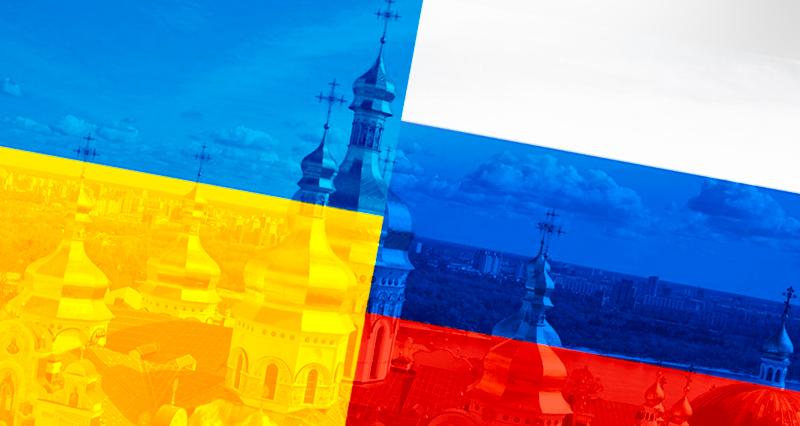
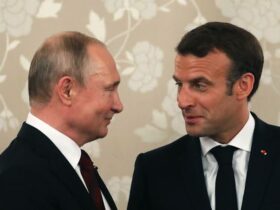
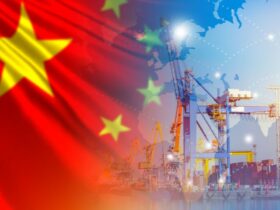
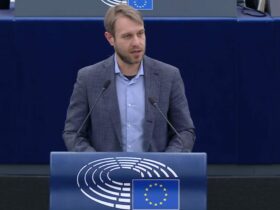
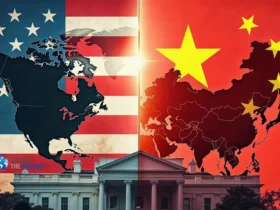
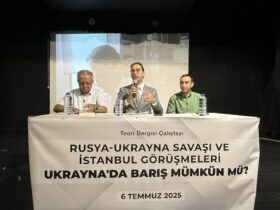
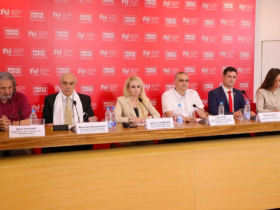
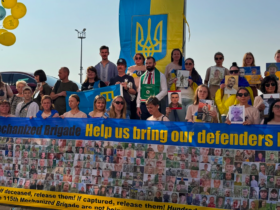
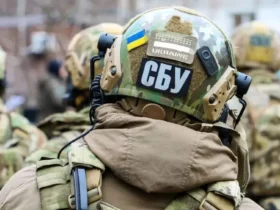

Leave a Reply